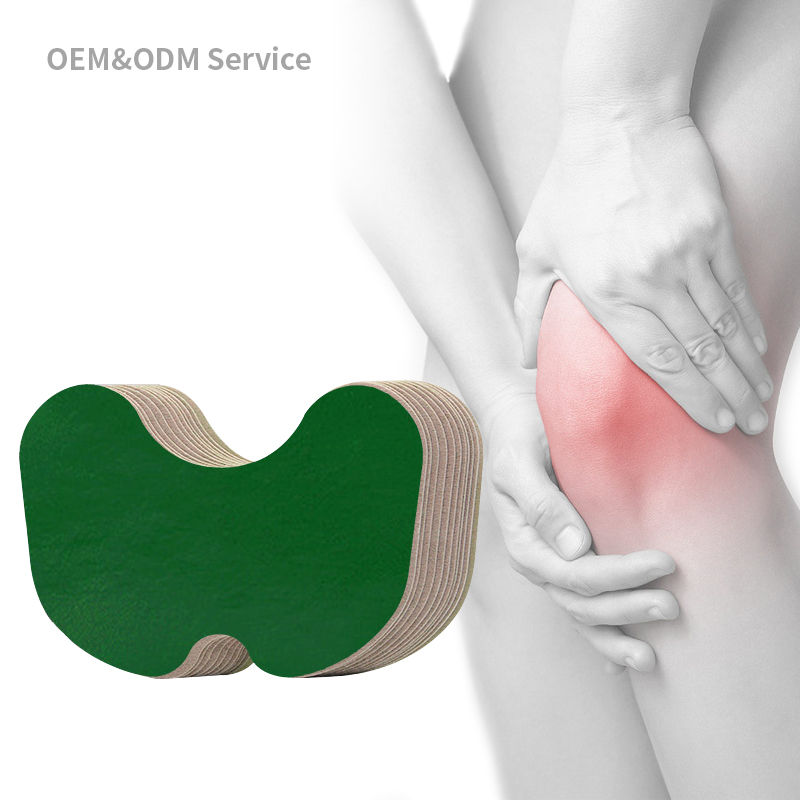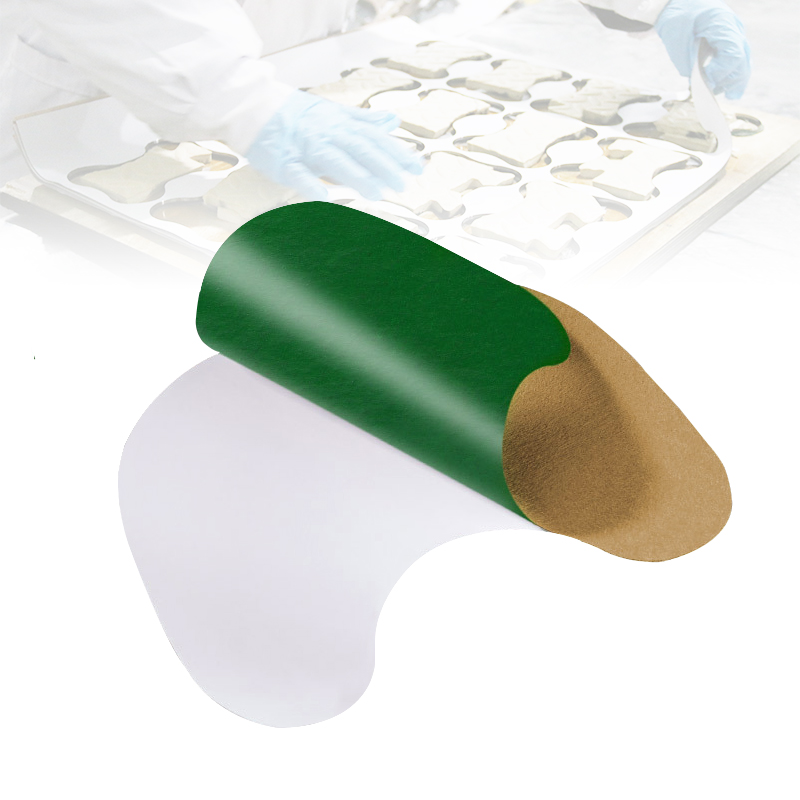How Knee Pain Relief Patches Manufacturers Can Ensure Quality Control in OEM Partnerships
Ensuring quality control in OEM (Original Equipment Manufacturer) partnerships is crucial for knee pain relief patches manufacturers. High-quality products build trust and loyalty among consumers, while poor-quality products can harm a brand's reputation and lead to significant financial losses. This article explores the strategies knee pain relief patches manufacturers can employ to maintain stringent quality control in their OEM partnerships.

1. Selecting the Right OEM Partner
Choosing the right OEM partner is the first step in ensuring quality control. Manufacturers must thoroughly evaluate potential partners to ensure they meet high standards of quality and reliability.
Comprehensive Research
Conducting extensive research on potential Knee Pain Relief Patches OEM partners is essential. Manufacturers should look for OEMs with a proven track record of producing high-quality knee pain relief patches. This includes reviewing their certifications, customer testimonials, and case studies.
Facility Audits
Visiting the OEM's manufacturing facilities can provide valuable insights into their operations. During these audits, manufacturers should assess the cleanliness, organization, and overall condition of the facilities. This helps ensure that the OEM maintains a high standard of hygiene and efficiency in their production processes.
Quality Certifications
Ensuring that the OEM partner holds relevant quality certifications, such as ISO 9001 or GMP (Good Manufacturing Practice), is crucial. These certifications indicate that the OEM adheres to international quality management standards, ensuring consistent product quality.
2. Establishing Clear Quality Standards
Once an OEM partner is selected, it is vital to establish clear quality standards and expectations. These standards should be documented and communicated effectively to the OEM.
Detailed Specifications
Providing the OEM with detailed product specifications is essential. This includes information on the active ingredients, patch size and shape, adhesive properties, and packaging requirements. Clear specifications help the OEM understand the exact requirements and reduce the risk of errors during production.
Quality Control Plans
Developing a comprehensive quality control plan that outlines the testing and inspection procedures is critical. This plan should specify the tests to be conducted at each stage of production, the acceptable quality levels, and the actions to be taken in case of deviations.
Regular Reviews and Updates
Quality standards and specifications should be reviewed and updated regularly to reflect any changes in regulations, market demands, or product formulations. Regular communication with the OEM ensures that they stay informed about these updates and continue to meet the required standards.
3. Implementing Rigorous Testing and Inspection Procedures
Rigorous testing and inspection procedures are essential to maintain product quality throughout the production process.
Incoming Material Inspection
Inspecting raw materials upon arrival at the OEM's facility is the first step in ensuring quality. This includes verifying the quality and purity of active ingredients, adhesives, and packaging materials. Any substandard materials should be rejected and replaced immediately.
In-Process Inspections
Conducting in-process inspections at critical stages of production helps identify and address quality issues early. These inspections can include checking the consistency of the patch formulation, the accuracy of the patch size and shape, and the integrity of the adhesive layer.
Final Product Testing
Final product testing involves comprehensive testing of the finished knee pain relief patches. This includes evaluating the efficacy of the active ingredients, the adhesion properties, and the overall durability of the patches. Only products that pass these tests should be approved for distribution.
4. Ensuring Regulatory Compliance
Compliance with regulatory standards is crucial for knee pain relief patches manufacturers. OEM partnerships should prioritize adherence to all relevant regulations and guidelines.
Understanding Regulatory Requirements
Manufacturers must have a thorough understanding of the regulatory requirements in their target markets. This includes regulations related to product safety, labeling, and marketing. Partnering with an OEM that is knowledgeable about these regulations is essential for ensuring compliance.
Documentation and Record-Keeping
Maintaining accurate documentation and records is vital for regulatory compliance. This includes records of raw material inspections, in-process inspections, and final product testing. Proper documentation helps demonstrate compliance during regulatory audits and inspections.
Regular Audits and Inspections
Conducting regular audits and inspections of the OEM's facilities and processes ensures ongoing compliance with regulatory standards. These audits should assess the OEM's adherence to quality control procedures, hygiene standards, and regulatory requirements.
5. Continuous Improvement and Feedback Mechanisms
Continuous improvement and feedback mechanisms are essential for maintaining and enhancing product quality over time.
Customer Feedback
Collecting and analyzing customer feedback provides valuable insights into product performance and quality. This feedback can help identify areas for improvement and guide the development of new and improved knee pain relief patches.
Regular Training and Updates
Providing regular training and updates to the OEM's staff ensures that they stay informed about the latest quality control practices and regulatory requirements. This training can include workshops, seminars, and online courses.
Collaborative Improvement Initiatives
Collaborating with the OEM on continuous improvement initiatives can drive innovation and enhance product quality. This can include joint research and development projects, process optimization, and the adoption of new technologies.
Conclusion
Ensuring quality control in OEM partnerships is vital for knee pain relief patches manufacturers. By selecting the right OEM partner, establishing clear quality standards, implementing rigorous testing and inspection procedures, ensuring regulatory compliance, and fostering continuous improvement, manufacturers can maintain high product quality and build consumer trust. These strategies help ensure that knee pain relief patches meet the highest standards of safety and efficacy, leading to greater market success and customer satisfaction.
Related Questions and Answers
1. What should manufacturers look for when selecting an OEM knee pain relief patches supplier?
Manufacturers should look for suppliers with a proven track record, relevant quality certifications (e.g., ISO 9001, GMP), and clean, well-organized facilities. Conducting facility audits and reviewing customer testimonials can also provide valuable insights.
2. How can detailed product specifications help in maintaining quality control?
Detailed product specifications provide the OEM with clear guidelines on the required product attributes, such as active ingredients, patch size, and packaging. This clarity helps minimize errors and ensures the final product meets the manufacturer's quality standards.
3. What are the key components of a comprehensive quality control plan?
A comprehensive quality control plan includes testing and inspection procedures at various production stages, acceptable quality levels, and actions for addressing deviations. It ensures consistent product quality and regulatory compliance.
4. How do regulatory audits help ensure quality control in OEM partnerships?
Regulatory audits assess the OEM's adherence to quality control procedures, hygiene standards, and regulatory requirements. Regular audits ensure ongoing compliance and help identify areas for improvement in the production process.
5. Why is continuous improvement important for maintaining product quality?
Continuous improvement helps manufacturers and OEMs stay ahead of industry trends and consumer needs. It involves collecting customer feedback, providing regular training, and collaborating on innovation initiatives to enhance product quality and performance.






